 |
|
|
|
|
|
|
|
 |
 |
 |
 |
|
|
 |
 |
 |
|
|
 |
 |
 |
Posted: |
Aug 14, 2017 - 5:41 PM
|
|
|
|
By: |
Bob DiMucci
(Member)
|
THE WAR OF THE GARGANTUAS was released in Japan in 1966 as Furankenshutain no kaiju. The film was a sequel to 1965’s FRANKENSTEIN CONQUERS THE WORLD. Naturally, the team of Ishiro Honda and Akira Ifukube directed and scored the film. Haruo Nakajima said Gaira the evil gargantua was his favorite character to play, due to the flexibility of the costume and the fact that you can see his eyes through the mask.
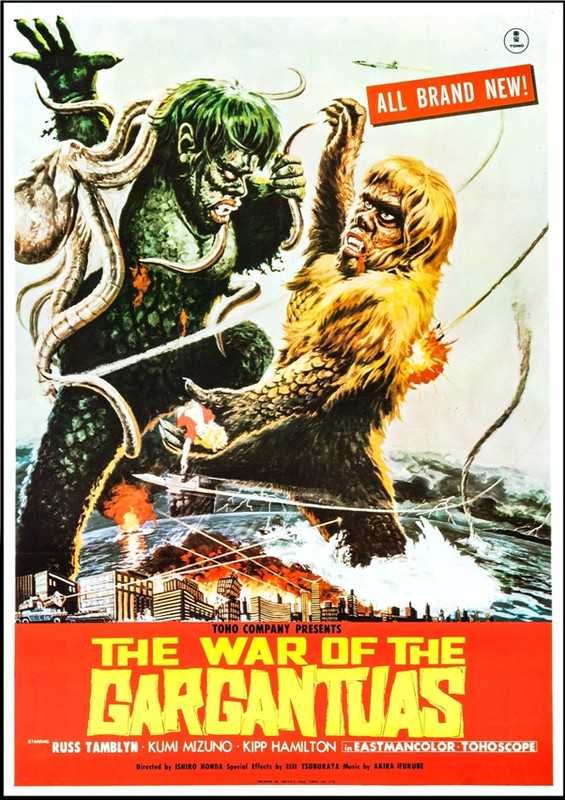
But if you saw THE WAR OF THE GARGANTUAS in the U.S., you probably saw it as part of a double feature. When Maron Films bought the U.S. rights to the film, executive producer Henry G. Saperstein re-edited the film to eliminate all references to Frankenstein and added new footage with American actor Russ Tamblyn. In July 1970, Maron released THE WAR OF THE GARGANTUAS on the top half of a double-bill with MONSTER ZERO, Maron’s re-titling of the 1965 Japanese film Kaijû Daisensô
Nick Adams is speaking English throughout MONSTER ZERO, despite the fact he seems to be conversing with the other actors, who are clearly speaking Japanese. The film was shot in the Italian style, with each nationality speaking its own language. Adams was simply dubbed over into Japanese for the Japanese release. Conversely, when the film was finally released in the US, Nick Adams voice is the only voice not dubbed over. The Japanese speaking actors are dubbed over into English.
MONSTER ZERO wasn't released in the U.S. for five years, perhaps because of the death of star Nick Adams. Another possibility is that producer Henry G. Saperstein, who picked up the U.S. distribution rights, had had a falling out with his previous business partners, Samuel Z. Arkoff and James H. Nicholson of American-International Pictures. Eventually, Maron Films distributed the film in the U.S.
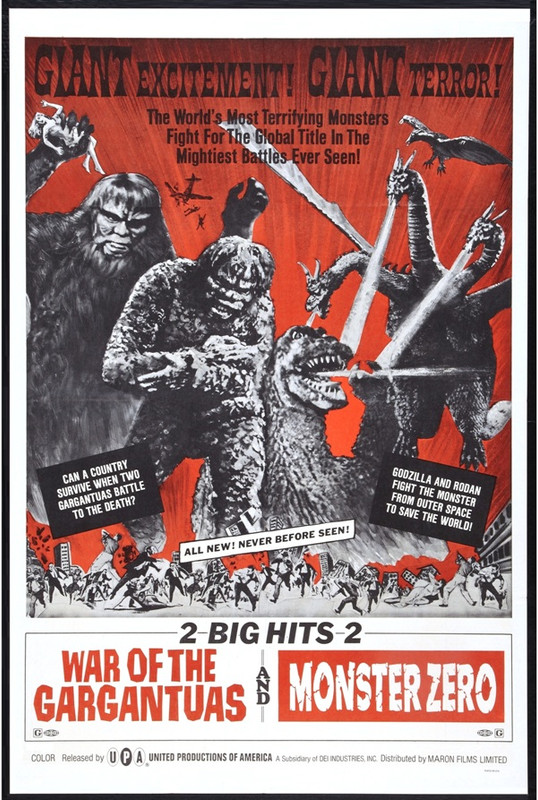
The following year, in December 1971, Maron re-released THE WAR OF THE GARGANTUAS, this time on the bottom half of a double-bill headlined by their latest Japanese acquisition, 1969’s All Monsters Attack, which Maron re-titled GODZILLA’S REVENGE.
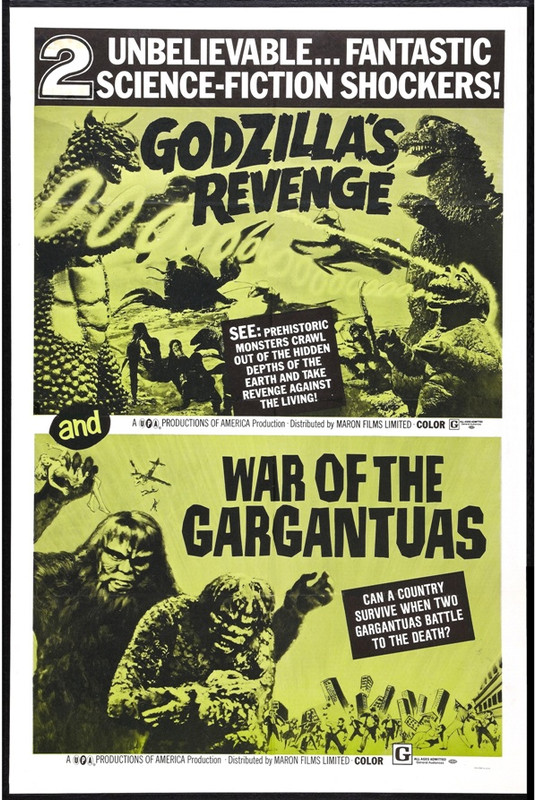
 |
|
|
|
|
|
|
|
|
|
|
|
|
|
 |
 |
 |
Posted: |
Aug 14, 2017 - 11:22 PM
|
|
|
|
By: |
Bob DiMucci
(Member)
|
Screenwriter Shin'ichi Sekizawa complained that he had run out of ideas for further monster movies, and director Jun Fukuda heartily agreed. Producer Tomoyuki Tanaka then proposed the idea of introducing a son to Godzilla.
So, in SON OF GODZILLA, we find scientists experimenting with changes in weather on a tropical island who get more than they bargained for when Godzilla shows up to battle humongous insects and protect his newborn child.
A pool was set up on stage nine during the production (stage nine is one of the largest on Toho's lot in Setagaya). They used the pool, which was about five feet deep, to film the shot of Godzilla rising above the surface of the ocean. Haruo Nakajima was on a cart on a rail. He held onto the handle of the cart while it was towed by a truck. As the cart moved forward, he slowly rose out of the water. He wore a very tiny air cylinder that contained enough air for about ten minutes. The water that rushed by his face while the cart was being towed made it very difficult for him to prevent the mouthpiece from coming out of his mouth.
Unusually, in the course of his tenure as Godzilla, Haruo Nakajima only played the monster in this film for the water scenes, since a taller actor was needed for the majority of the film to make Godzilla seem even bigger than his son Minilla. Tall actor/baseball player Seiji Onaka played the role of Godzilla, but after doing a quarter of his scenes, he had an accident while playing baseball during filming, breaking two fingers. After Onaka bowed out, Nakajima's protege Yû Sekita carried the rest of the role (besides being a good fit for the Godzilla suit).
Masaru Satô scored the 1967 film. The film could not find a U.S. theatrical distributor, and in 1968 the Walter Reade Organization acquired it for television airings.
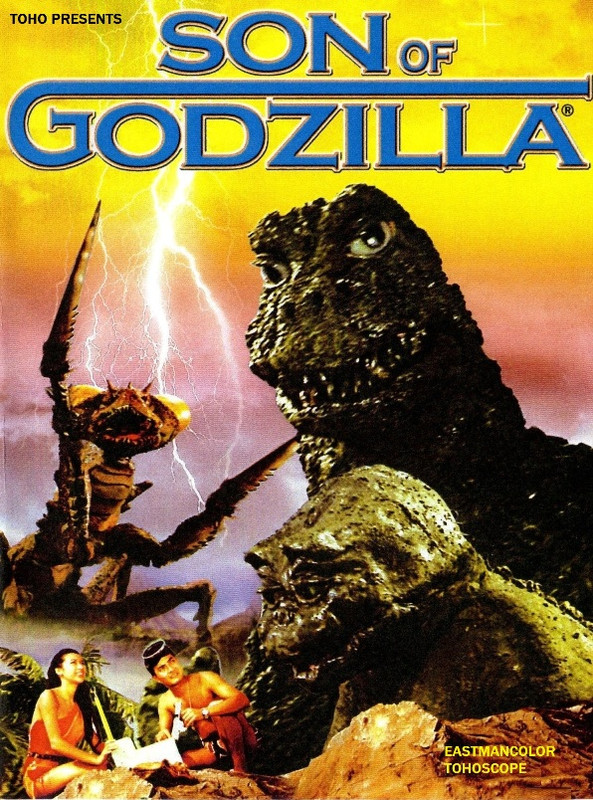
 |
|
|
|
|
|
 |
 |
 |
Posted: |
Aug 14, 2017 - 11:48 PM
|
|
|
|
By: |
Bob DiMucci
(Member)
|
Toho rounded up its most famous monsters -- Godzilla, Rodan, and Mothra -- for 1968's DESTROY ALL MONSTERS. But that wasn't all. Supporting the big three were King Ghidorah, Anguirus, Minya, Spiega (aka Kumonga), Baragon, Gorosaurus, Manda, and Varan. In the film, female aliens take control of Earth's monsters and begin using them to destroy the human race. In addition to his work in the Godzilla suit, Haruo Nakajima has an out-of-suit cameo in this film.
DESTROY ALL MONSTERS brought Ishirô Honda back as director and Akira Ifukube as the musical composer for the first time in three years. The intent of Toho was that this was going to be the final Godzilla movie, since the popularity of the films was losing steam. However, it was very successful, and Toho changed their mind and went on to create more Godzilla films into the 70's. American International Pictures released the film in the U.S. in 1969.
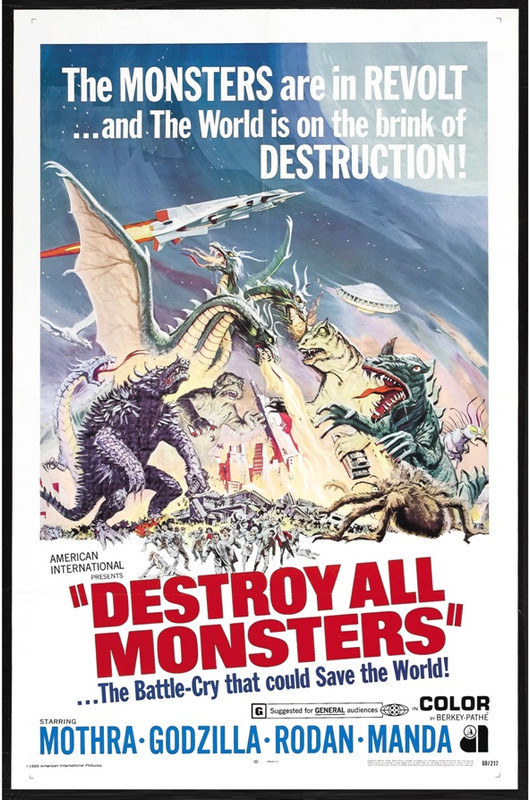
|
|
|
|
|
|
|
|
|
|
|
|
|
|
|
|
|
|
|
|
|
|
|
 |
 |
 |
|
|
 |
 |
 |
| |
|
|
|
 |
|
 |
|
|
|


